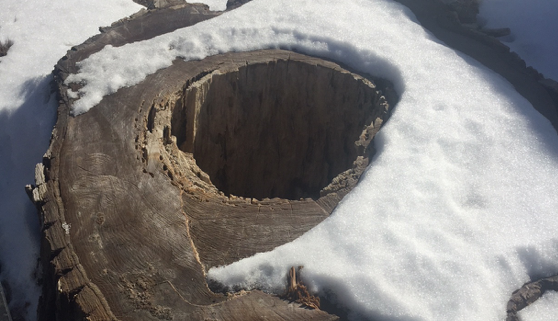Winter Watering Guide: Caring for Newly Planted Trees During the Winter

Why is winter watering vital?
In the fall and winter, trees drop their leaves and become dormant as they prepare for colder temperatures. However, newly planted trees experience the greatest growth in their root system during this time. Colorado often experiences dry periods during winter (two or more weeks without snow cover), which can leave roots susceptible to drying out, causing tree death or severe root damage. Not watering throughout the winter is the largest contributing factor to the mortality of newly planted trees. It is best to slowly give any newly planted trees 10-15 gallons of water before putting the hose away for the winter and to supplement with 10-15 gallons of water during dry periods and when temperatures are above 40 degrees. Do not water when temperatures are near or below freezing.
Watering routine:
- Before winter: Continue to water your tree(s) until the ground freezes. Slowly (trickle over several hours) give your newly planted tree 10-15 gallons of water. Don’t forget to disconnect your hose so that it doesn’t freeze.
- During winter: Water your tree twice a month, with 10-15 gallons of water if the ground isn’t frozen. This is best done when the temperature is around 40 degrees and at mid-day to allow water to soak in before the ground freezes at night. Continue to check the moisture level of the root ball (the main mass of roots directly beneath the trunk), especially during long periods without snow cover.
- Following spring and summer: Continue to water the trees(s) once a week with 10-15 gallons of water and more when the weather is dry, windy or we have prolonged periods of drought and sunshine.
Additional tree care tips for the winter:
- Wrap the trunk: In Colorado, young trees, especially thin-barked trees like Honeylocust, Maple and Linden, are susceptible to sunscald and frost cracks because of drastic winter temperature fluctuations. To prevent bark damage, wrap the trunks of younger trees up to the first branches using commercial tree wrap. A general rule of thumb is to wrap trees around Thanksgiving and remove tree wrap around Easter.
- Mulch the base: Apply 2 to 4 inches of wood chips, bark or other organic mulch near the base of the tree, but not against it, to reduce soil evaporation, improve water absorption and insulate against temperature extremes. Some community recycling programs like Denver Recycles provide wood chips free of charge.
Proper tree care during the winter months is crucial for tree health and survival. Following these watering and tree care tips can help your trees continue to grow and thrive. For additional information, read more from the Colorado State Forest Service on winter tree watering.

